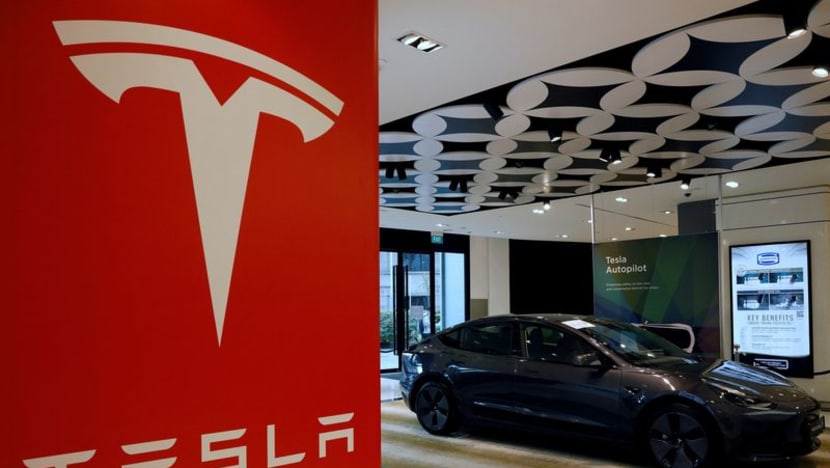ERP 2.0 Tesla delay: On-board unit has no impact on electronics of EVs, says LTA
Following a delay in the rollout of the ERP 2.0 system on Tesla cars, there have been concerns about its compatibility with the electric vehicle.

A Tesla model 3 car is seen in their showroom in Singapore on Oct 22, 2021. (File photo: Reuters/Edgar Su)

This audio is generated by an AI tool.
SINGAPORE: The on-board unit (OBU) of the new ERP 2.0 system has no impact on the electronics or circuitry of electric vehicles such as Teslas, said the Land Transport Authority on Monday (May 27).
The clarification came after concerns arose about ERP 2.0’s compatibility with Tesla cars. LTA confirmed with CNA earlier this month that the rollout of the system on new Tesla cars would be delayed.
LTA said then that it was still finalising the technical installation details for Tesla vehicles with Tesla Singapore but did not provide more details.
Associate Professor Zhou Yi from the Engineering Cluster at the Singapore Institute of Technology was quoted in the CNA article as saying that the OBU of the ERP 2.0 system could impact the battery or performance of Tesla vehicles. LTA sought to correct the view in a Facebook post on Monday.
“The OBU has no impact on the electronics or circuitry of electric vehicles,” said LTA in the post.
“It only draws power from the vehicles’ battery for operations”.
Assoc Prof Zhou added in his response to CNA earlier this month, which was not included in the original article, that there was also a chance that the OBU may not affect the performance of the vehicle.
"As the OBU does not need high power, it may not affect the performance," he had said.
He added that car manufacturers may need to follow their safety and quality control processes for any modification to the system.
LTA said in the post on Monday that as an additional safeguard, installers will run tests on EV vehicles “to ensure that there is no impact on performance”. The agency also said it has also worked with authorised motor dealers to make sure the OBU does not affect vehicle performance.
Reiterating its response to CNA earlier this month, LTA said it was finalising the technical installation details for Tesla vehicles together with the authorised dealer.
“The OBU installation for all other vehicles, including all other brands of EVs, is proceeding as planned,” the authority said.
PROCESSING UNIT WILL NOT SCALD USERS: LTA
LTA on Monday also addressed concerns about the ERP 2.0 processing unit "scalding" users.
A Straits Times article earlier this month quoted a car dealer who raised the possibility of the processing unit heating up and hurting the driver’s left leg.
LTA refuted this claim, saying that the OBU has passed a wide range of tests and met internationally accepted standards, including those for temperature and humidity.
“When properly installed, it is safe and reliable,” said LTA. “While the processing unit generates some heat, similar to how a laptop can feel warm after use, it will not 'scald' anyone, and it also comes with a plastic protective cover.”
LTA added that the OBU has been tested for water resistance and that it is protected against water splashes, such as from a wet umbrella.
LTA said that it has reached out to both the industry observers quoted in the respective articles, and that they have accepted LTA’s clarifications.
Installation of the ERP 2.0 units began in August last year with a group of early adopters. It was expanded to company vehicles in November before being rolled out to existing motorcycles and new cars in May this year.
More than 18,000 vehicles have been fitted with the units as of the start of May.

















